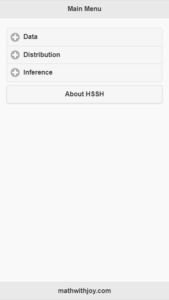WebSQL is an application programming interface (code that allows an asynchronous, transcational interface to SQLite) for storing data in client-side databases that can be queried using a variant of SQL. WebSQL is only supported in Chrome and Safari (and Android and iOS by extension). Since 2010, it has been deprecated in favor of IndexedDB.
Suppose you want to create a client-side database containing first and last names that the user enters in the following text input fields:
<div data-role="fieldcontain">
<label for="firstName">First Name:</label>
<input type="text" id="firstName" />
<br/>
</div>
<div data-role="fieldcontain">
<label for="lastName">Last Name:</label>
<input type="text" id="lastName" /><br />
</div>
Open the database and create a table in the database:
//Test for browser compatibility
if (window.openDatabase) {
//Create the database the parameters are 1. the database name 2.version number 3. a description 4. the size of the database (in bytes) 1024 x 1024 = 1MB
var mydb = openDatabase("names_db", "0.1", "A Database of Names", 1024 * 1024);
//create the names table using SQL for the database using a transaction
mydb.transaction(function(t) {
t.executeSql("CREATE TABLE IF NOT EXISTS names (id INTEGER PRIMARY KEY ASC, first TEXT, last TEXT)");
});
} else {
alert("WebSQL is not supported by your browser!");
}
Take the first and last names in the text input fields and insert them into the names table:
//function to add the name to the database
function addName() {
//check to ensure the mydb object has been created
if (mydb) {
//get the values of the first and last text inputs
var first = document.getElementById("firstName").value;
var last = document.getElementById("lastName").value;
//Test to ensure that the user has entered both a first and last
if (first !== "" && last !== "") {
//Insert the user entered details into the names table, note the use of the ? placeholder, these will replaced by the data passed in as an array as the second parameter
mydb.transaction(function(t) {
t.executeSql("INSERT INTO names (first, last) VALUES (?, ?)", [first, last]);
outputNames();
});
} else {
alert("You must enter a first and last!");
}
} else {
alert("db not found, your browser does not support web sql!");
}
}
Populate an empty unordered list with first and last names from the names table:
//function to get the list of names from the database
function outputNames() {
//check to ensure the mydb object has been created
if (mydb) {
//Get all the names from the database with a select statement, set outputNameList as the callback function for the executeSql command
mydb.transaction(function(t) {
t.executeSql("SELECT * FROM names", [], updateNameList);
});
} else {
alert("db not found, your browser does not support web sql!");
}
}
//function to output the list of names in the database
function updateNameList(transaction, results) {
//initialise the listitems variable
var listitems = "";
//get the name list holder ul
var listholder = document.getElementById("namelist");
//clear names list ul
listholder.innerHTML = "";
var i;
//Iterate through the results
for (i = 0; i < results.rows.length; i++) {
//Get the current row
var row = results.rows.item(i);
listholder.innerHTML += "<li>" + row.last + ", " + row.first + " (<a href='javascript:void(0);' onclick='deleteName(" + row.id + ");'>Delete Name</a>)";
}
}
Delete records from the names table by clicking on a list item in the unordered list:
//function to remove a name from the database, passed the row id as it's only parameter
function deleteName(id) {
//check to ensure the mydb object has been created
if (mydb) {
//Get all the names from the database with a select statement, set outputNameList as the callback function for the executeSql command
mydb.transaction(function(t) {
t.executeSql("DELETE FROM names WHERE id=?", [id], outputNames);
});
} else {
alert("db not found, your browser does not support web sql!");
}
}
